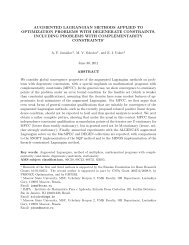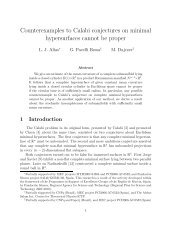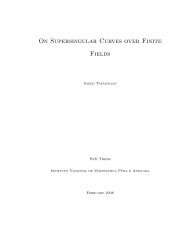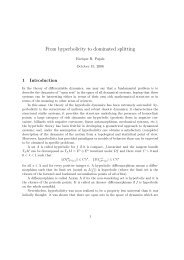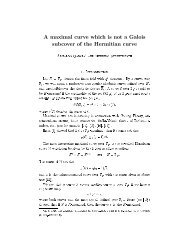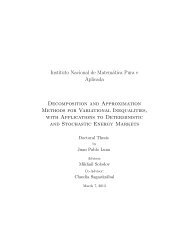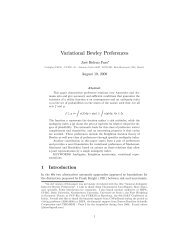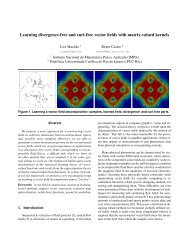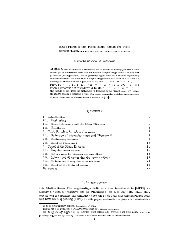a reduced model for internal waves interacting with submarine ...
a reduced model for internal waves interacting with submarine ...
a reduced model for internal waves interacting with submarine ...
Create successful ePaper yourself
Turn your PDF publications into a flip-book with our unique Google optimized e-Paper software.
Linear Weakly nonlinear<br />
Strongly nonlinear<br />
Flat bottom LFM WNFM SNFM<br />
Rough<br />
bottom<br />
LCM WNCM SNCM<br />
Table 4.1: Abbreviations <strong>for</strong> the six different <strong>model</strong>s.<br />
In order to use the method of lines to solve numerically the systems of equations<br />
(4.1, 4.2, 4.3) and their flat bottom versions, let us rewrite them in a more<br />
convenient way,<br />
η t = E(η, u 1 ),<br />
⎧⎪⎨⎪⎩ V t = F(η, u 1 ),<br />
(4.4)<br />
where V is an auxiliary variable defined <strong>for</strong> each <strong>model</strong> in Table 4.2. The corresponding<br />
vector field (E, F) is defined in Table 4.3. The mean-layer horizontal<br />
upper velocity u 1 can be recovered fromηand V by inverting the relations in Table<br />
4.2 in a way to be specified later on <strong>for</strong> each case. For the time being, let us<br />
assume that u 1 =Ψ(η, V), given a certain operatorΨ.<br />
According to the method of lines, we can discretize in space and solve a coupled<br />
system of ODEs by a finite difference <strong>for</strong>mula in t like, <strong>for</strong> example, a Runge-<br />
Kutta integration scheme or a predictor-corrector solver <strong>with</strong> an Adams-Bash<strong>for</strong>th<br />
predictor and an Adams-Moulton corrector.<br />
First, an approximation scheme <strong>for</strong> theξ-derivatives involved in the right-hand<br />
side of the systems above must be used <strong>for</strong> the discretization in space. A choice<br />
54



